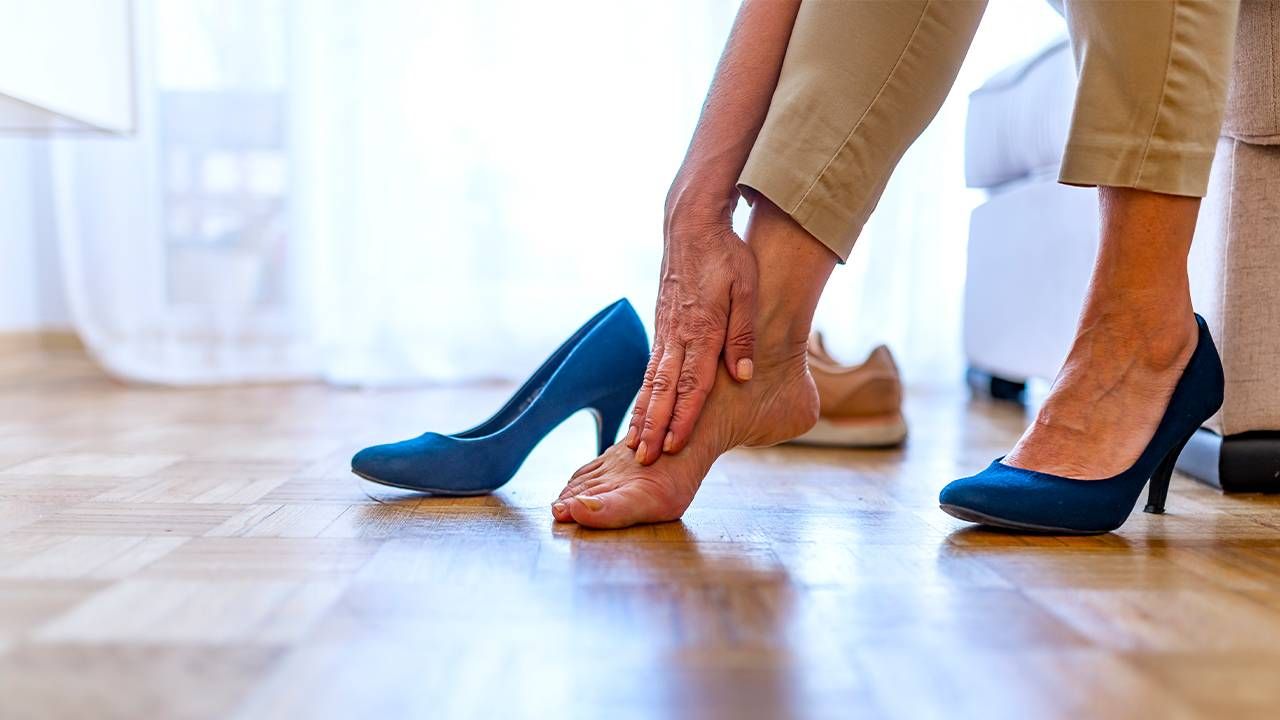What Causes Bunions and How You Can Manage Them
A bump known as a bunion that forms on the outside of the big toe affects approximately one out of three people over the age of 65
Look at your feet. Does your big toe lean towards your other toes? Over time, a bump forms on a joint at the base of your big toe. It's a result of pressure from the big toe pushing against the first metatarsal bone in your foot. That bump is a bunion.

Each time you walk, you put all your weight on that part of your foot and with each step, your shoe rubs against it causing calluses. It doesn't happen overnight. This takes years to develop; that's why bunions are more common among people aged 65 and over than for younger folks.
"Ill-fitting shoes make bunions more likely."
Bunions, one of the most common foot deformities, occurs more among older women, and because of this, many foot doctors point to tight fitting high heel shoes as the main culprit. The science is mixed; some doctors believe high heels and shoes with little room aren't the main causes of bunions.
"High heels and pointy shoes are one of a few causes," says Sheldon S. Lin, an orthopaedic surgeon at Rutgers North Jersey Orthopaedic Institute and an associate professor at Rutgers New Jersey Medical School.
He points to these other factors:
The Causes
- Genetics: “Bunions can run in your family.”
- Flat feet: Having no visible arches can also run in your family.
- Shoes: “Ill-fitting shoes make bunions more likely.”
- Arthritis: Rheumatoid arthritis (RA), an inflammatory type of arthritis, can cause bunions. It’s not uncommon for people with RA to develop deformities in their feet.
The Symptoms
If you see a bump on your big toe, it may be a bunion. Often bunions form on both of your big toes. Here's what to look for:
- Swelling in the shape of a bump
- Redness
- It feels sore when you touch it
- Pain that comes and goes or is ongoing
- Numbness in your big toe or in the joint where the bunion has formed
- Callused feet, corns, or hammertoes (A hammertoe is a joint on your toe that points up instead of lying flat.)
- The bump can look shiny
- The bump feels warm
"Your symptoms may be mild and some people have no symptoms at all," Lin says. "Some bunions are painful and can feel like there's pressure placed on the area."
Treating Bunions
According to Lin, "It's more of a case of managing bunions. The treatment focuses on relieving the symptoms. Bunions don't go away unless they are surgically removed."
The first step is to change your shoes. "Wear comfortable shoes with a wide toe area that takes the pressure off your feet," Lin says. "Squeezing your toes into a pair of shoes is uncomfortable. And talk to your doctor about orthotic devices. These can be over-the-counter or, better yet, custom-made."
You can purchase custom-made orthotics from your foot doctor. Some health insurance companies cover custom-made orthotics. You can also buy commercial ones in pharmacies and online.
"The problem is once the deformity has occurred, it's difficult to non-surgically force the big toe in the right position."
If you Google "bunion correctors" or "bunion pain relief," several products pop up on your computer's screen. They include bunion pads that cushion the foot, numerous toe straightening devices that move your big toe from pointing inward so that it appears straight, and several types of corrective shoes.
"The problem is once the deformity has occurred, it's difficult to non-surgically force the big toe in the right position," Lin says. "These products may offer some relief. Changing your shoes so that your toes aren't crowded together and there's space and comfort is the best non-surgical option."
"It also comes down to your level of pain. You won't need surgery if there's no pain. Let it be. Change the shoe to fit the foot. Don't change the foot to fit the shoe," he adds.
Other Treatment Options
Massage, physical therapy, and ultrasound therapy can break up soft tissue and reduce pain and inflammation. Acupuncture may relieve pain, too. Over-the-counter nonsteroidal anti-inflammatory drugs such as aspirin and other common pain relievers can help you manage any pain. Ice packs reduce pain and swelling, too.
If the pain persists and you want to avoid surgery, you can try steroid injections to reduce pain and swelling. This is more of a last resort before considering surgery. Steroid injections shouldn't be used often because too many injections can damage the joint.
"Consider surgery when nonsurgical treatments don't help and the pain is overwhelming," Lin says. "If walking becomes too painful, then surgery becomes an option."
What's a Bunionectomy?
This surgical procedure "is minimally invasive and can be done in your doctor's office," Lin says. "You're in and out of the office the same day."
"It's done," he explains, "by removing the bunion and realigning the bones in your foot so your big toe is in its proper position."
Lin performs lapiplasty surgery. It's a 3D corrective surgery. He taught the procedure to surgeons through a medical company called Treace Medical Concepts, Inc.
Before considering surgery, Lin suggests talking to your foot doctor to discuss the various types of treatments.
"Get an accurate diagnosis and ask your doctor to consider all non-surgical options first," he says.

